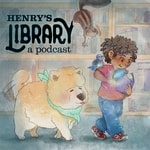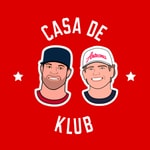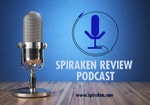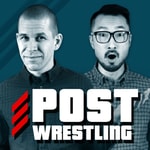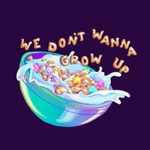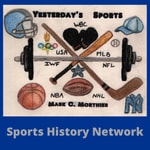Sports' Forgotten Heroes – Détails, épisodes et analyse
Détails du podcast
Informations techniques et générales issues du flux RSS du podcast.
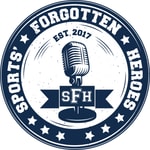
Sports' Forgotten Heroes
Warren Rogan
Fréquence : 1 épisode/17j. Total Éps: 179

Classements récents
Dernières positions dans les classements Apple Podcasts et Spotify.
Apple Podcasts
🇫🇷 France - baseball
03/08/2025#60🇫🇷 France - baseball
02/08/2025#53🇫🇷 France - baseball
01/08/2025#47🇫🇷 France - baseball
31/07/2025#40🇫🇷 France - baseball
30/07/2025#33🇬🇧 Grande Bretagne - baseball
24/07/2025#98🇬🇧 Grande Bretagne - baseball
23/07/2025#88🇩🇪 Allemagne - baseball
23/07/2025#90🇩🇪 Allemagne - baseball
22/07/2025#60🇬🇧 Grande Bretagne - baseball
18/07/2025#90
Spotify
Aucun classement récent disponible
Liens partagés entre épisodes et podcasts
Liens présents dans les descriptions d'épisodes et autres podcasts les utilisant également.
See all- https://www.silvermansound.com/
2348 partages
- https://sportshistorynetwork.com/
899 partages
- https://www.patreon.com/sportsfh
101 partages
- http://www.patreon.com/sportsfh
9 partages
- http://patreon.com/sportsfh
4 partages
- https://twitter.com/SportsFHeroes
108 partages
- https://twitter.com/TSRHarv59
9 partages
- http://www.sportsfheroes@twitter.com
1 partage
Qualité et score du flux RSS
Évaluation technique de la qualité et de la structure du flux RSS.
See allScore global : 63%
Historique des publications
Répartition mensuelle des publications d'épisodes au fil des années.
144: Brooklyn FOOTBALL Dodgers - NFL
Épisode 144
mardi 19 novembre 2024 • Durée 49:19
In 1930 the NFL moved one of the original franchises from Dayton, Ohio to the borough of Brooklyn, New York and re-branded the "Triangles" to a very familiar name - Dodgers. Yes, that's right. From 1930 through the 1944 NFL season, the NFL placed a team in Brooklyn, Ebbets Field. Looking to capitalize on the same name as their baseball cousins, the Brooklyn FOOTBALL Dodgers had high hopes. In Dayton, the fact is, the community was too small to support an NFL team. The Triangles, as they were known in Dayton, played in a small stadium (5,000 seats) and couldn't sellout. Less than capacity crowds, financial struggles and the inability to attract the game's top talent, the NFL was left with no choice but to move the team in order to keep it alive. So, with baseball the No. 1 sport at that time and the NFL still trying to establish itself as a viable league, it was moving its franchises from small cities to larger metropolitan areas and tried to capitalize on names that would be instantly recognizable. But, it didn't always work out, and the football-Dodgers are an example of that. During the team's 15-year stay in Brooklyn, only five times did it finish at .500 or above. The Dodgers never won their division and never appeared in a post-season game. They also struggled at the gate. So, after the 1944 season (in which they had renamed themselves the Brooklyn Tigers), they packed up and moved to Boston and merged with the Yanks. Amazingly, the Dodgers actually still exist today. Yes, this franchise is still in the NFL and on this episode of Sports' Forgotten Heroes we explore it all with guest Roger Godin who several years ago wrote a fascinating book that looks back at the history of this long-forgotten team, "The Brooklyn Football Dodgers, The Other "Bums."
Mentioned in this episode:
Sports History Network Theme Song
This theme song was produced by Ron "Tyke" Oliver of Music Meets Sportz https://sites.google.com/view/sportsfanztastic?usp=sharing
143: Bucky Lew - NBA
Épisode 143
mardi 5 novembre 2024 • Durée 01:01:20
Before there was an NBA, before there was a BAA, professional basketball looked a lot different than it does today. Back in the early 1900s, professional basketball was largely made up of regional leagues spread out across the country. A particular hotbed for these regional leagues was the Northeast. One of the leagues, the NEBL (New England Basketball League), was also one of the more progressive leagues. In fact, it was the first to allow "colored" players and leading the way was Harry "Bucky" Lew. Now known as the first African-American professional basketball player, Lew was also one of the game's stars. On this episode of Sports' Forgotten Heroes, author Chris Boucher joins as we discuss the career of Bucky Lew, how these leagues were set up and what the game of basketball looked like back then. Chris, who wrote the book, "The Original Bucky Lew", and I discuss how different the ball was and how difficult it was to dribble the ball. How basketball courts were boxed in by chicken wire, so there was no out-of-bounds, there were no backboards, and fouling a player and the free-throws were no where near the same as they are in the game we watch today. But, the main focus is Lew. The racism he faced, how he played the game, how he continued to break down barriers such as becoming the first African-American to officiate a game, the first to coach a team and the first to own a team. Bucky Lew was certainly a pioneer and we dive into it all on this episode of Sports' Forgotten Heroes.
Mentioned in this episode:
Sports History Network Theme Song
This theme song was produced by Ron "Tyke" Oliver of Music Meets Sportz https://sites.google.com/view/sportsfanztastic?usp=sharing
134: The Federal League - MLB
Épisode 134
mardi 2 juillet 2024 • Durée 01:00:53
Back in the early 1900s, the National League was the only game in town. It was Major League Baseball, thus the name the "Senior Circuit". In 1901, Ban Johnson, and others, joined the game with the American League and it was granted Major League status in 1903. Both leagues operated as separate entities, but met every year in the World Series. In 1913, the Federal League was a minor league, but it wanted to join the party and in 1914 and 1915 it called itself a Major League as well. The Federal League, however, did not gain widespread acceptance. Despite going to head-to-head in Pittsburgh, Chicago, Brooklyn and St. Louis with established NL and AL teams, it couldn't gain a foothold. It also played in Buffalo, Indianapolis, Kansas City and Baltimore, it struggled in those cities as well. Poor attendance and high salaries for the players it poached from its NL and AL rivals, the Federal League didn't make it. In fact, very - very - few have challenged MLB. On this episode of Sports' Forgotten Heroes, baseball historian and author Dan Levitt joins the podcast to discuss the Federal League. Its teams, players, the court cases and so much more. Dan is an expert on the Federal League having written the book, "The Outlaw League And The Battle That Forged Modern Baseball."
Mentioned in this episode:
Sports History Network Theme Song
This theme song was produced by Ron "Tyke" Oliver of Music Meets Sportz https://sites.google.com/view/sportsfanztastic?usp=sharing
60: Hal Trosky-MLB
Épisode 60
mardi 9 juillet 2019 • Durée 01:16:00
When you are competing for notoriety against the likes of Lou Gehrig, Jimmie Foxx and Hank Greenberg, you have to be really good … great … to grab headlines. You need to hit a ton of homeruns. You need to rack up the RBI’s and you better have a terrific batting average to go along with all of that. Well, that’s exactly what Hal Trosky of the Cleveland Indians did. In fact, in his first four full years for the Indians, he averaged 33+ homeruns a season, over 136 RBI a year and his batting average over his first four years was .310. The guy could flat-out rake! In 1936, his best year, he hit .343 with 42 homeruns, 162 RBI and 405 total bases! His OPS was 1.026. In his first two full seasons, he played every inning of every game. Yet, he was a virtual unknown. Playing for a team that never contended, Trosky was relegated to playing in obscurity. At a time when baseball staged two all-star games a year, Trosky was never invited – a terrible injustice. How could a guy who hit the way he did, a guy who other teams had to plan for, a guy averaged 27 homeruns and 122 RBI a year for his career to go along with a yearly average of .302 be so overlooked? Hal Trosky is the true definition of what this podcast is all about – a forgotten hero. Perhaps, even more amazing is this, very few fans of the Cleveland Indians know his name. Well, on this episode of Sports’ Forgotten Heroes, we recall the career of Hal Trosky and remind fans of the Indians just how great he was; and here to help us do that is William H. (Bill) Johnson who wrote the terrific book, “Hal Trosky: A Baseball Biography.”
Links:
Sports' Forgotten Heroes website
Sports' Forgotten Heroes Patreon Page
Sports' Forgotten Heroes twitter
© 2019 Sports' Forgotten Heroes
Mentioned in this episode:
Sports History Network Theme Song
This theme song was produced by Ron "Tyke" Oliver of Music Meets Sportz https://sites.google.com/view/sportsfanztastic?usp=sharing
59: Ray Collins-MLB
Épisode 59
mardi 25 juin 2019 • Durée 01:04:25
So many baseball players have had their careers cut short by injury. Some of those careers might be considered marginal, and others might be considered a tragedy based on the fact that the career was on an upward trajectory and headed for greatness. Ray Collins, who pitched for the Boston Red Sox from 1909 and into the 1915 season had one of those careers. His last full season, 1914, at the age of 27, Collins went 20-13 – this followed a campaign in which he went 19-8. But, 1915, Collins developed shoulder issues, went 4-7 and never pitched in the Majors again. And that’s a shame because Collins was a stalwart on the Boston pitching staff. He was a key ingredient in Boston’s 1912 World Series win over the New York Giants, and was able to hold his own against opposing pitchers the likes of Cy Young and opposing hitters the likes of Ty Cobb. Collins, who hails from Vermont, is also regarded as one of the best ever to suit-up for the University of Vermont. In fact, Collins was enshrined into the University’s Hall of Fame. While pitching for Vermont, Collins also pitched in Class D minor league baseball, something you could do back in the early 1900s, and he was a dominant force. Several major league teams took notice of Collins and wanted to sign him. But, it basically came down to two: the New York Yankees and the Boston Red Sox. Collins decided on the latter, mostly because they played closest to his home state of Vermont. Tom Simon, somewhat of an expert when it comes to baseball players who grew up in Vermont, and a member of SABR, joins the podcast for a wonderful discussion on a career that was cut short by injury, the career of Ray Collins.
Links:
Sports' Forgotten Heroes website
Sports' Forgotten Heroes Patreon Page
Sports' Forgotten Heroes twitter
© 2019 Sports' Forgotten Heroes
Mentioned in this episode:
Sports History Network Theme Song
This theme song was produced by Ron "Tyke" Oliver of Music Meets Sportz https://sites.google.com/view/sportsfanztastic?usp=sharing
58: Park, Brown & Fleck-PGA
Épisode 58
mardi 11 juin 2019 • Durée 01:28:35
Three golf champions. Three remarkable championships. Three very unique stories about three guys who had never won before: Mungo Park, 1874 Open Championship; David Brown, 1886 Open Championship; Jack Fleck, 1955 U.S. Open. Each have very unique stories and joining Sports’ Forgotten Heroes to help tell their stories is Connor Lewis from the TalkinGolf History podcast. Connor is one of the foremost golf historians around, created the Society of Golf Historians and is absolutely enthralled with the game and its history. His knowledge is second-to-none and the stories he recalls and relates are absolutely terrific. Mungo Park won the 1874 Open Championship after spending 20-years at sea. David Brown won the 1886 Championship after he had given up the game to become a roofer. More remarkable is the fact that he was actually working on a roof when he was convinced to come down, tee it up, and then went on to capture the Claret Jug. Jack Fleck, who was in Normandy on D-Day, ultimately became a professional golfer, qualified for the 1955 U.S. Open, found himself 9-strokes back after the first round, climbed into contention, tied Ben Hogan on the 72nd hole and beat Hogan in an 18-hole playoff to win! In the episode of SFH, we take a look back at all three championships and talk about the careers of all three golfers.
Links:
Sports' Forgotten Heroes website
Sports' Forgotten Heroes Patreon Page
Sports' Forgotten Heroes twitter
©2019 Sports' Forgotten Heroes
Mentioned in this episode:
Sports History Network Theme Song
This theme song was produced by Ron "Tyke" Oliver of Music Meets Sportz https://sites.google.com/view/sportsfanztastic?usp=sharing
57: Hank O'Day-MLB
mardi 28 mai 2019 • Durée 01:51:03
Hank O’Day is one of the most unique and important figures in the history of Major League Baseball. He broke into the game as a pitcher in the American Association for Toledo in 1884. He finished his career seven years later with the New York Giants. During his career, on occasion, O’Day stepped out onto the field as an umpire and when his playing days concluded, he turned to umpiring permanently. Well, sort of. In 1912, O’Day stepped back into the dugout as the manager of the Cincinnati Reds and went 75-78. He was let go after that one season. In 1914, the Chicago Cubs hired O’Day to be their manager and he went 78-76 and was again let go after just one season. So, O’Day put his mask back on and went back out on the field as a manager and ultimately spent the better part of three decades calling games. Major League Baseball officials consulted O’Day throughout his career and after his days on the field were over to discuss the rules of the game, what new rules should be instituted, which rules should be tweaked and which rules should be abolished. Sometimes they agreed with Hank and on other occasions they didn’t, which of course, disturbed O’Day greatly. O’Day was also on the field to make one of the most famous calls in baseball history, the call that led to the New York Giants and Chicago Cubs tying 1-1 in the heat of the 1908 pennant race … the famous “Merkle Boner” game. O’Day dedicated his life to the game he loved so much probably to the detriment of enjoying a normal personal life. He was basically a hermit. Dennis Bingham, who umpires games in the Chicago-area, and is a member of SABR, is one of the most foremost authorities on the career of Hank O’Day and he joins Sports’ Forgotten Heroes for an in-depth conversation on one of the most interesting and unique figures in baseball history.
Links:
Sports' Forgotten Heroes website
Sports' Forgotten Heroes Patreon Page
Sports' Forgotten Heroes twitter
©2019 Sports' Forgotten Heroes
Mentioned in this episode:
Sports History Network Theme Song
This theme song was produced by Ron "Tyke" Oliver of Music Meets Sportz https://sites.google.com/view/sportsfanztastic?usp=sharing
56: Roy Sievers-MLB
Épisode 56
mardi 14 mai 2019 • Durée 01:21:07
Roy Sievers was one of the most clutch hitters in baseball history. In fact, Sievers, who won the 1949 American League Rookie of the Year with the St. Louis Browns, hit nearly a quarter of his 318 career homeruns in the eighth inning or later. But, becoming a clutch hitter almost didn’t happen. After winning the ROY in 1949, Sievers fell into a slump and that was followed by a devastating right-shoulder injury that almost cost him his career. In fact, during the four-year stretch of 1950 through 1953, Sievers played in just 247 games and hit just 19 homeruns. But, Browns owner Bill Veeck worked hard with Sievers to help him overcome the injury, and Sievers did just that. After Veeck sold the Browns, the team moved to Baltimore and Sievers was traded to the Washington Senators. Great news for Washington, not so good for the new Baltimore Orioles. Sievers, not only recovered, he became one of the most feared sluggers in baseball. Over the course of the next 10-years, Sievers connected for 275 homeruns including an American League leading and career best 42 in 1957 to go along with 114 RBI. Sievers was named to five all-star teams and three times finished in the top-5 for MVP voting. Greg Wolf, the co-Director of the BioProject for SABR, and a frequent guest on Sports’ Forgotten Heroes, returns to the podcast for a wonderful discussion on Sievers, the Browns, Bill Veeck and more. Wolf, by the way, just finished working on a new book, “Wrigley Field, The Friendly Confines at Clark and Addison” and you can pick up a copy by visiting SABR.org or Amazon.
Links:
Sports' Forgotten Heroes website
Sports' Forgotten Heroes Patreon Page
Sports' Forgotten Heroes twitter
©2019 Sports' Forgotten Heroes
Mentioned in this episode:
Sports History Network Theme Song
This theme song was produced by Ron "Tyke" Oliver of Music Meets Sportz https://sites.google.com/view/sportsfanztastic?usp=sharing
55: Seattle Pilots-MLB
Épisode 55
mardi 30 avril 2019 • Durée 01:35:53
In 1969, Major League Baseball expanded to four cities: San Diego, Montreal, Kansas City and Seattle. Montreal moved to Washington and became the Nationals and Seattle moved as well. Yes, there was a team in Seattle before the Mariners – the Seattle Pilots. The Pilots played in Seattle for just one season – 1969 – and at the end of spring training, 1970, they were officially sold and relocated to Milwaukee. But that one year in Seattle was a most interesting time. The Pilots were/are a study in what not to do when trying to establish a new team in a new city. Ownership of the team was not committed, the Stadium was ancient and not meant to host Major League Baseball, many of Seattle’s politicians and residents did not want a team and, getting back to the stadium, finding a location was utter chaos. The team itself was a typical expansion team going 64-98 in its first season. But they had a few players who people thought they could build around: Tommy Harper, Tommy Davis, Lou Pinella and Mike Hegan. But, before the season started, Pinella was traded to Kansas City where he went on to win Rookie of the Year. That trade of Pinella for John Geinar and Steve Whitaker proved to be one of the most lopsided trades in franchise history, and it was orchestrated by Seattle’s GM Marvin Milkes, who also thought the team was much better that it was and talked about the Pilots finishing as high as third. That was a problem too as he did everything he could to help the team play better ball. Well, that backfired as the Pilots had a revolving door of players and according to Bill Mullins, author of the book, “Becoming Big League, Seattle, the Pilots, and Stadium Politics,” and who is our guest on this episode of Sports’ Forgotten Heroes, Seattleites regarded the Pilots as nothing more than a glorified minor league team because of the constant player movement, just like a minor league team. Join Bill Mullins now on Sports’ Forgotten Heroes as we take a look back at the fascinating story of the Seattle Pilots.
Links:
Sports' Forgotten Heroes website
Sports' Forgotten Heroes Patreon Page
Sports' Forgotten Heroes twitter
©2019 Sports' Forgotten Heroes
Mentioned in this episode:
Sports History Network Theme Song
This theme song was produced by Ron "Tyke" Oliver of Music Meets Sportz https://sites.google.com/view/sportsfanztastic?usp=sharing
54: Dolf Luque-MLB
Épisode 54
mardi 16 avril 2019 • Durée 01:07:13
Dolf Luque won 194 games over the course of his 20-year Major League career. In 1923, he put together one of the greatest seasons ever for the Cincinnati Reds going 27-8. Luque, however, never again won 20-games in a season, but remained extraordinarily consistent. In fact, in 1925 he went 16-18 and finished in the top-15 (13th) in MVP voting and in 1933, at the age of 42, he went 8-2 for the New York Giants and finished 25th in MVP voting. In that year’s World Series, pitching in relief, Luque became the first pitcher from a Latin American country to win a World Series game. But like so many, the career of Luque is long forgotten, despite the fact that he is the 5th winningest pitcher in the rich history of the Cincinnati Reds. Even more surprising is the fact that he isn’t even mentioned is one of the most treasured pictorial histories of the Reds. How is this possible? Baseball historian Peter Gordon, a member of the Society for American Baseball Research (SABR) who has also written and researched about a variety of topics on the game, returns to Sports’ Forgotten Heroes for a conversation about Luque. One of the first from Cuba to play Major League Baseball, Luque also salvaged several careers including that of Sal “The Barber” Maglie. Luque, working as a coach in the rival Mexican League when Maglie was trying to work his way back to the Majors, taught Maglie how to pitch inside and that turned Maglie’s career around. Luque, who was inducted into Mexico’s Baseball Hall of Fame, is also a member of the Cuban Baseball Hall of Fame for his career as a player and the fact that he’s the second winningest manager in Cuban baseball history … and he’s also a member of the Reds Hall of Fame.
Links:
Sports' Forgotten Heroes website
Sports' Forgotten Heroes Patreon Page
Sports' Forgotten Heroes twitter
©2019 Sports' Forgotten Heroes
Mentioned in this episode:
Sports History Network Theme Song
This theme song was produced by Ron "Tyke" Oliver of Music Meets Sportz https://sites.google.com/view/sportsfanztastic?usp=sharing

